A Map Of Our Galaxy The Milky Way, Showing Pulsars (red), Planetary Nebulae (blue), Globular Clusters

A map of our galaxy the Milky Way, showing pulsars (red), planetary nebulae (blue), globular clusters (yellow), and the orbits of several stars
More Posts from Bigbluenasa and Others
What’s Up for April 2016?
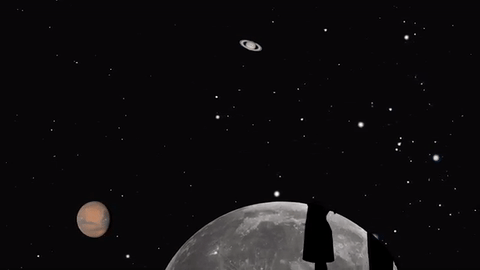
Jupiter, Mars, the Lyrid meteor shower and 2016’s best views of Mercury are all visible in the sky this month.
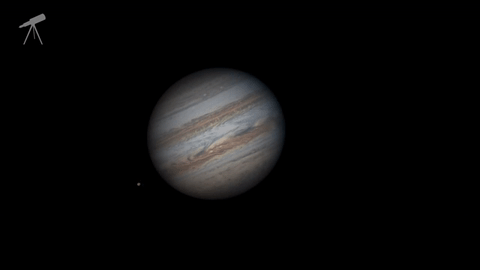
Jupiter, where our Juno mission will begin orbiting on July 4, continues to shine almost as brightly this month as last. And eagle-eyed telescope viewers will see a transit, a shadow transit, an occultation and an eclipse of Jupiter’s moons- all in one night: April 6-7.
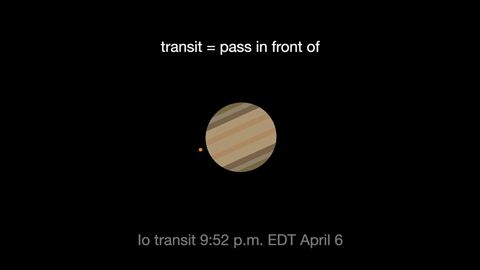
Io transits first, crossing the planet beginning at 9:52 p.m. EDT. It’s shadow can be seen less than an hour later.
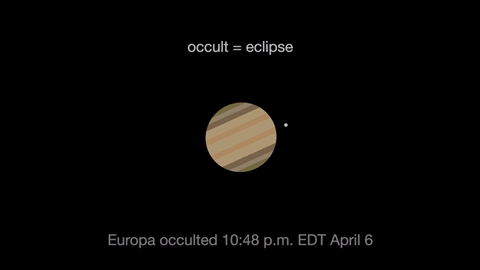
Next Jupiter occults, or eclipses, Europa as Europa slips behind the giant planet at 10:48 p.m. EDT. At 3 a.m. Europa reappears from its eclipse, dramatically leaving the shadow of Jupiter.
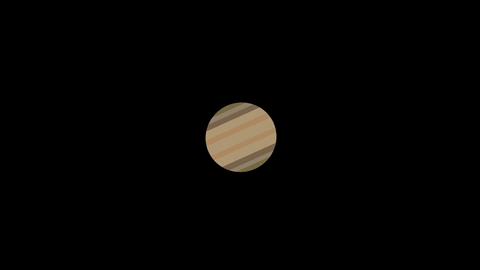
Ganymede transits the planet beginning at 1:01 EDT April 7.
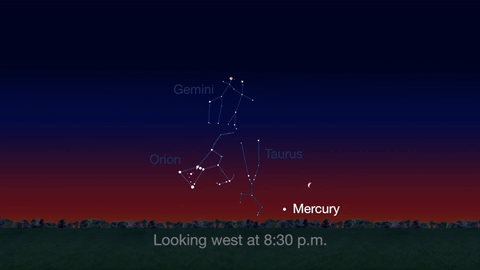
Check out the other planets in April, too! Mercury is always a challenging object to view, but this month you can spot it after sunset about 10 degrees above the horizon. Through a telescope you can see its phase. It will appear like a tiny crescent moon, with about 1/3 of its disk illuminated.
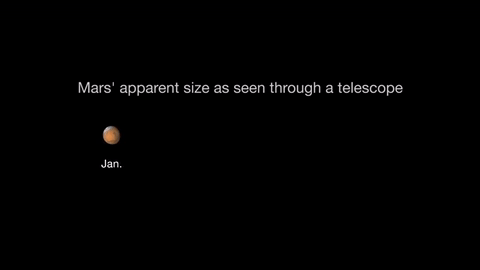
Mars is finally visible before midnight this month. It rises in the southeast at about 10 p.m. by the end of April. The best observing of Mars will be when it is highest in the sky. This means a few hours before dawn. Its brightness and apparent size increase dramatically this month. By month’s end, Mars appears nearly twice as bright as at the beginning of the month.
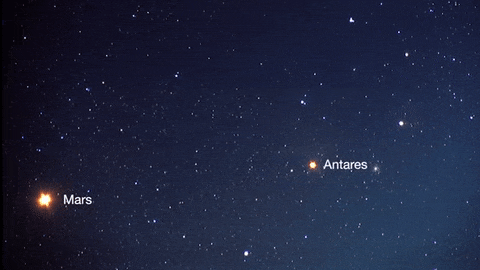
About mid-month you’ll see Mars near its rival in the sky: the similar-colored red supergiant star Antares. The name “Antares” means “equal to or rival of Mars”.
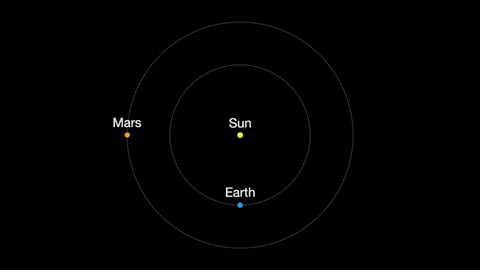
Earth moves almost twice as fast as Mars does, so it often passes Mars in their race around the sun. This causes “retrograde motion”: an illusion we see from our viewpoint on Earth.
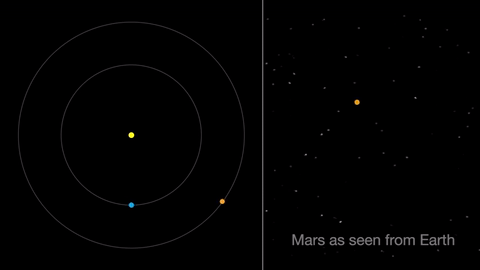
Retrograde motion happens as Earth catches up to Mars, causing Mars to appear slow to slow its eastward motion against the stars. After a few days, when Earth has overtaken Mars, the Red Planet seems to move westward. Eventually, Earth moves far enough around its orbit that Mars appears to be moving eastward again.
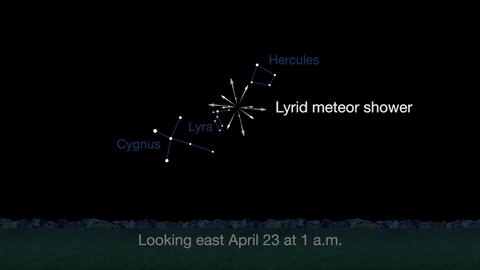
April features one meteor shower, the Lyrids. This year the Lyrids are marred by the full moon. The best time to view will be just before dawn on April 23, when the constellation Lyra is overhead and the moon will be near to setting.
With all of these great things to spot in the sky this month, be sure to get outside and look up!
Make sure to follow us on Tumblr for your regular dose of space: http://nasa.tumblr.com
Small Tissue Chips in Space a Big Leap Forward for Research
Tissue chips, thumb-drive sized devices that contain human cells in a 3D matrix, represent a giant leap in science.
They can test cells’ response to:
•stresses
•drugs
•genetic changes

The Tissue Chips in Space initiative seeks to better understand the role of microgravity on human health and disease and to translate that understanding to improved human health on Earth.
This series of investigations to test tissue chips in microgravity aboard the International Space Station is planned through a collaboration between the National Center for Advancing Translational Sciences (NCATS) at the National Institutes for Health (NIH) and the National Laboratory in partnership with NASA.

Many of the changes in the human body caused by microgravity resemble the onset and progression of diseases associated with aging on Earth, but in space, changes occur much faster. Scientists may be able to use tissue chips in space to model changes that take months or years to happen on Earth.
A tissue chip needs three properties, according to Lucie Low, scientific program manager at NCATS. “It has to be 3D,” she explained. “It must have multiple different types of cells, and it must have microfluidic channels. Essentially, you get a functional unit of what human tissues are like, outside of the body,” said Low.

As accurate models of the structure and function of human organs, tissue chips provide a model for predicting whether a drug, vaccine or biologic agent is safe in humans more quickly and effectively than current methods.

This first phase of Tissue Chips in Space includes five investigations. An investigation of immune system aging is planned for launch on the SpaceX CRS-16 flight, scheduled for mid-November. The other four, scheduled to launch on subsequent flights, include lung host defense, the blood-brain barrier, musculoskeletal disease and kidney function. This phase tests the effects of microgravity on the tissue chips and demonstrates the capability of the automated system.
All five investigations make a second flight about 18 months later to confirm use of the model, such as testing potential drugs on the particular organs. Four more projects are scheduled for launch in summer 2020, including two on engineered heart tissue to understand cardiovascular health, one on muscle wasting and another on gut inflammation.
Ultimately, the technology could allow astronauts going into space to take along personalized chips that could be used to monitor changes in their bodies and to test possible countermeasures and therapies. That would be a major leap forward in keeping astronauts healthy on missions to deep space!
Make sure to follow us on Tumblr for your regular dose of space: http://nasa.tumblr.com

The Andromeda Galaxy is 2 million light years away from us so what we see now is how it appeared 2 million years ago. It will collide with our Milky Way in 2 billions years from now. The two galaxies are heading towards each other at a rate of 430 km/hr. A billion years from now Andromeda will loom as a spectacular site, eventually swelling to fill half of the night sky.
Read about the 2015 HESTEC conference and the educators workshops we conducted on-site for the High School STEM Educators in attendance. @NASAEPDC @NASAEDU

NASA BEST engineering design challenges offer a transdisciplinary STEM approach that's fun and engaging! #nasamei2017 (at NASA - Johnson Space Center in Houston, TX)
Ever been wowed by a NASA science visualization? Learn about their creation from NASA technical artist Kel Elkins. @NASAEPDC
Elementary GLOBE is designed to introduce K-4 students to the study of Earth System Science. The complete instructional unit includes:
Science-based storybooks designed to introduce students to key concepts in water, soil, clouds, seasons, aerosols, and Earth system studies.
Classroom learning activities complementing the science content covered in each storybook that are designed to further engage students in GLOBE's 5 investigation areas.
Chasing Storms at 17,500mph
Flying 250 miles above the Earth aboard the International Space Station has given me the unique vantage point from which to view our planet. Spending a year in space has given me the unique opportunity to see a wide range of spectacular storm systems in space and on Earth.
The recent blizzard was remarkably visible from space. I took several photos of the first big storm system on Earth of year 2016 as it moved across the East Coast, Chicago and Washington D.C. Since my time here on the space station began in March 2015, I’ve been able to capture an array of storms on Earth and in space, ranging from hurricanes and dust storms to solar storms and most recently a rare thunder snowstorm.

Blizzard 2016

Hurricane Patricia 2015

Hurricane Joaquin 2015

Dust Storm in the Red Sea 2015

Dust Storm of Gobi Desert 2015

Aurora Solar Storm 2015

Aurora Solar Storm 2016

Thunderstorm over Italy 2015

Lightning and Aurora 2016

Rare Thunder Snowstorm 2016
Follow my Year In Space on Twitter, Facebook and Instagram.
How Well Do you Know Neptune?

Dark, cold and whipped by supersonic winds, Neptune is the last of the hydrogen and helium gas giants in our solar system. More than 30 times as far from the sun as Earth, the planet takes almost 165 Earth years to orbit our sun! In fact, in 2011, Neptune completed its first orbit since its discovery in 1846.

Here are a few things you might not know about the windiest planet:
If the sun were as tell as a typical front door, the Earth would be the size of a nickel and Neptune would be about as big as a baseball.
Neptune orbits our sun, a star. Neptune is the eighth planet from the sun at a distance of about 4.5 billion km (2.8 billion miles) or 30.07 AU.
One day on Neptune takes about 16 hours (the time it takes for Neptune to rotate or spin once)
Neptune makes a complete orbit around the sun (a year in Neptunian time) in about 165 Earth years (60,190 Earth days)
Neptune has six rings
Voyager 2 is the only spacecraft to have visited Neptune
Neptune has 13 moons. They are named after various sea gods and nymphs in Greek mythology
Did you know that Neptune has storms?

Similar to Jupiter, Neptune has storms that create gigantic spots in its atmosphere…well, it did. When Voyager 2 flew past Neptune in 1989, it tracked and imaged the “Great Dark Spot” — a storm larger than the entire Earth! When the Hubble Space Telescope imaged Neptune the spot had disappeared, only to be replaced with two smaller storms, which in turn also disappeared.
Make sure to follow us on Tumblr for your regular dose of space: http://nasa.tumblr.com
-
 snowhitenastasya reblogged this · 5 years ago
snowhitenastasya reblogged this · 5 years ago -
 patterncrystal reblogged this · 5 years ago
patterncrystal reblogged this · 5 years ago -
 tonybenge reblogged this · 6 years ago
tonybenge reblogged this · 6 years ago -
 cheapseatsfan reblogged this · 6 years ago
cheapseatsfan reblogged this · 6 years ago -
 theseeker1864 liked this · 6 years ago
theseeker1864 liked this · 6 years ago -
 peace1717 reblogged this · 6 years ago
peace1717 reblogged this · 6 years ago -
 peace1717 liked this · 6 years ago
peace1717 liked this · 6 years ago -
 seiorand liked this · 6 years ago
seiorand liked this · 6 years ago -
 drvictort liked this · 6 years ago
drvictort liked this · 6 years ago -
 someone-took-my-name liked this · 6 years ago
someone-took-my-name liked this · 6 years ago -
 wheatu liked this · 6 years ago
wheatu liked this · 6 years ago -
 2020tybo liked this · 7 years ago
2020tybo liked this · 7 years ago -
 itsnotme14197 liked this · 7 years ago
itsnotme14197 liked this · 7 years ago -
 thepig16 liked this · 7 years ago
thepig16 liked this · 7 years ago -
 awesomeckleemann84-blog reblogged this · 7 years ago
awesomeckleemann84-blog reblogged this · 7 years ago -
 awesomeckleemann84-blog liked this · 7 years ago
awesomeckleemann84-blog liked this · 7 years ago -
 triplecross333 liked this · 7 years ago
triplecross333 liked this · 7 years ago -
 lettucetree reblogged this · 7 years ago
lettucetree reblogged this · 7 years ago -
 tenderlypurpledream reblogged this · 8 years ago
tenderlypurpledream reblogged this · 8 years ago -
 cowboykirk liked this · 8 years ago
cowboykirk liked this · 8 years ago -
 0tul1ss liked this · 8 years ago
0tul1ss liked this · 8 years ago -
 amarynthian-fortress reblogged this · 8 years ago
amarynthian-fortress reblogged this · 8 years ago -
 amarynthian-fortress liked this · 8 years ago
amarynthian-fortress liked this · 8 years ago -
 harperhug reblogged this · 8 years ago
harperhug reblogged this · 8 years ago -
 honeyedguffaw liked this · 8 years ago
honeyedguffaw liked this · 8 years ago -
 thisisacatperson reblogged this · 8 years ago
thisisacatperson reblogged this · 8 years ago -
 farstriker liked this · 8 years ago
farstriker liked this · 8 years ago -
 faejilly liked this · 8 years ago
faejilly liked this · 8 years ago -
 janiemcpants reblogged this · 8 years ago
janiemcpants reblogged this · 8 years ago -
 spacey-space-stuff-blog reblogged this · 8 years ago
spacey-space-stuff-blog reblogged this · 8 years ago -
 foi-esperer-aimer-paix liked this · 8 years ago
foi-esperer-aimer-paix liked this · 8 years ago -
 amalgammaray reblogged this · 8 years ago
amalgammaray reblogged this · 8 years ago -
 jts14love liked this · 8 years ago
jts14love liked this · 8 years ago -
 captainprocrastination-blog liked this · 8 years ago
captainprocrastination-blog liked this · 8 years ago -
 its-shinybouquetdragon-blog liked this · 8 years ago
its-shinybouquetdragon-blog liked this · 8 years ago -
 pearly-everlasting reblogged this · 8 years ago
pearly-everlasting reblogged this · 8 years ago